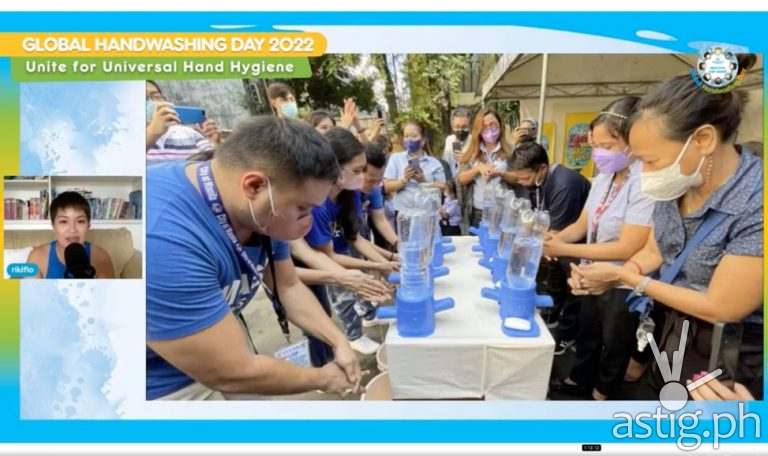PHILIPPINES – Recently, Manila Water Foundation went live on Facebook to celebrate Global Handwashing Day with its partners, P&G Safeguard, United Nations International Children’s Emergency Fund (UNICEF), and the Department of Education (DepEd).
Prior to the Facebook Live, Safeguard kicked off the celebration face-to-face with the local government of Quezon City, one of #SAFEWash program’s biggest beneficiaries. P&G’s flagship brand emphasized how important consistent proper hand hygiene is in keeping the safety of both children and school administrators is, especially with safety restrictions being lifted. For this reason, Safeguard is committed to making sure that every school has access to handwashing facilities. With the culmination of the construction of the 285 handwashing facilities, P&G Safeguard, along with its partners, was proud to announce that the National Capital Region (NCR) is on track to having all of its schools star-rated in the DepEd Wash in Schools (WinS) program.
Why Handwashing is Important
During Safeguard and MWF’s Global Handwashing Day livestream, David Khoo, Principal Scientist of P&G’s Health and Hygiene Institute, led a short lecture on the science of handwashing and how germs can spread. Khoo mentioned that “scientists and doctors would agree that the main way germs infect us is through our hands.”
Every time we cover our mouth when we cough or sneeze, every exchange of money and items that passes between our hands, every flush of the toilet, and all 23 times per hour that we unconsciously put our hands on our faces just to name a few.

Given that we use our hands for all that we do, it is important we remember to wash our hands for at least 20 seconds.
Khoo also set some common handwashing myths straight, such as having a bucket of water is not as effective in cleaning our hands, compared to washing with running water.
“Anytime you have a standing bucket of water (water that isn’t flowing or running), the first time you use it, it may be clean. But after that, the germs may be left behind and they will grow. So, the next time you use it, you will potentially reinfect and contaminate your hands with the germs that are growing in that standing water.”
A Friendly Reminder to Wash Your Hands
Vice President for P&G Beauty Care and Brand Operations Aldrich Gopal pointed out that even if we are all out and about, it does not mean that germs and diseases are eliminated and that washing your hands is crucial to protect the future of our nation – especially our students. “The threat of germs and diseases never left us, even as we move on to the new normal. The same germs can cause diseases that lead to school absences. However, with the power of a single SAFEwash, we can remove most of those diseases. So, when we make regular handwashing a part of our students’ lives, we also protect them from missing opportunities that would lead them to success in the future.”

A single hand wash can help lessen the spread of germs—and it only takes 20 seconds! For yourself, your loved ones, and the people around you, let’s unite for a safer Philippines through practicing proper hand hygiene in and out of our homes.


